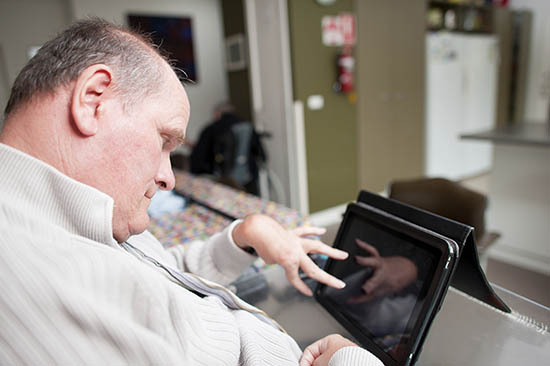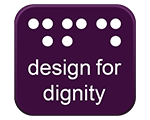Designing for dignity
Testing with customers
Testing concepts and designs with people who have lived experience of disability is a great way of seeing whether your design is accessible.
Inclusive design can be complex and its impact across disability groups can be quite varied and at times conflicting. For example, tactile markers are beneficial to someone with limited vision, but can be more difficult for those using a wheelchair or mobility aid.
There will not be one straightforward solution, so it is important to manage stakeholder expectations.
Even so, taking a participatory approach enables stakeholders to exercise their citizenship, by appreciating the issues and complexities first hand and have their voice listened to on their own terms when exploring inclusive solutions.

The Disability Council of NSW*Scales, I.,1997, Consultation and People with a Disability, Disability Council of NSW recommends the following tactical tips for facilitating the engagement process.
- Ensure there is a balanced cross section of representation from the disability community.
- Develop an agreed engagement protocol in collaboration with key stakeholders.
- Ensure appropriate advance notice of engagement, sessions, outlining agenda, objectives and outcomes.
- Provide flexibility to enable stakeholders to contribute to agenda setting.
- Check to ensure engagement information is communicated in accessible formats that meet the needs of all key stakeholders (e.g. braille, AUSLAN, Easy English).
- Be clear about engagement boundaries, process and timings and manage expectations sensitively.
- Avoid overly large consultation groups as it will limit ability for all voices to be heard.
- Ensure the venue for engagement session is appropriately accessible and can accommodate carers if necessary.
- Ensure appropriate length of time is allocated to discussions.
- Ensure facilitator is culturally competent to run the engagement process.
- Check if additional communication formats are needed during facilitated sessions (e.g. an AUSLAN interpreter).
- Actively listen with a demonstrably open mind and frame understanding of issues without ‘ableist’ bias.
- Close the loop on engagement by ensuring appropriate and timely follow up of findings and next steps.
- Follow through on agreed actions and use accessible technologies for stakeholder feedback.
Many disability advocacy organisations are usually able to facilitate connections to their audiences or members. The Australian Federation of Disability Organisations (AFDO) is a good starting point.




